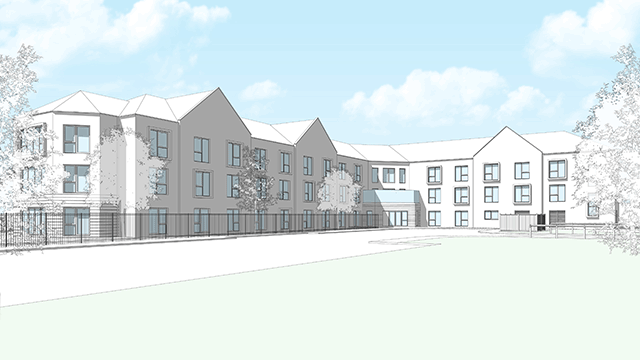Emma Preece and Tom Weekes QC delve into the nuances of restrictive covenants
Question
I own a field on which I want to build houses. The field was once part of the 500‑acre Porthouse Estate. By an 1870 conveyance, Lord Porthouse sold the field. The purchaser covenanted “with Lord Porthouse and his successors in title not to do anything on the field of whatsoever nature which may be or become a nuisance or annoyance to the neighbourhood”. The conveyance contains no other covenants. In the 1950s, the Porthouse Estate sold its entire property portfolio at an auction in individual lots.
The leaseholder of a flat in a neighbouring property claims to have the benefit of the covenant because her flat is in a building which, at the date of the 1870 conveyance, was part of the Porthouse Estate. The leaseholder claims that the development would breach the covenant because it would harm the amenity of her flat by spoiling the view from its sitting room window. She explains that it is nicer to look at a field than a housing development. The leaseholder has threatened to apply for an injunction prohibiting me from undertaking the development. What is the likelihood of her succeeding?
Answer
It is likely to be arguable that the development would not be a “nuisance or annoyance” within the meaning of the covenant. But, even if the development would be a “nuisance or annoyance”, it is unlikely that anyone (including the leaseholder) has the benefit of the covenant.
Explanation
In Hunter v Canary Wharf Ltd [1997] AC 655; [1997] PLSCS 108 the House of Lords held that the construction of a tower which interfered with the TV reception of neighbouring properties could not be a nuisance because erecting a building can never be a nuisance. That seems to be because a landowner is regarded as enjoying, as an incident of the natural and ordinary enjoyment of land, a right to build.
Nuisance covenants are modelled on the common law. So, it might be thought that, unless building is expressly mentioned, buildings/structures would fall outside the ambit of nuisance covenants. However, in Dennis v Davies [2009] EWCA Civ 1081; [2010] 1 EGLR 81, the Court of Appeal held that a nuisance covenant, similar to the covenant in our case, was breached by the erection of an extension to a house which obstructed an attractive view of a river. The trial judge applied the following test to determine whether the covenant was breached:
“Would reasonable people, having regard to the ordinary uses of the claimant’s houses for pleasurable enjoyment, be annoyed and aggrieved by the extension? [W]ould the extension raise an objection in the minds of reasonable men, and be an annoyance within the meaning of the covenant?”
It is hard to know how to apply that test to a housing development. By reference to what criteria are we supposed to ascertain whether a reasonable person would be “annoyed and aggrieved” by an activity (ie building) which the common law regards as a natural incident of land ownership?
In our case, the 1870 conveyance does not expressly prohibit building on the field. Nor does it expressly prohibit the use of the field for non-agricultural uses. So, the covenant appears to contemplate that the field could be developed at a point in the future. Arguably, the parties to the conveyance must have intended that, to constitute a “nuisance or annoyance”, more was required than merely the loss of a view of the field as undeveloped land.
In any event, irrespective of whether the development would be a “nuisance or annoyance” within the meaning of the covenant, no-one seems to be entitled to enforce the covenant. The benefit of a covenant may pass to a person who is not themselves the original covenantee either by: (i) assignment, (ii) a building scheme, or (iii) annexation. The sale of the field was not part of a building scheme. And it is unlikely that there is an unbroken chain of assignments of the benefit of the covenant. So, the covenant is enforceable by the owners of neighbouring properties only if the 1870 conveyance annexed the benefit of the covenant to (some or all of) Lord Porthouse’s retained land.
The recent case of Bath Rugby Ltd v Greenwood and others [2021] EWCA Civ 1927; [2021] PLSCS 220 suggests that the 1870 conveyance failed to annex the benefit of the covenant to any land.
In Bath Rugby, a tenant for life of the Bathwick Estate sold some playing fields by a conveyance containing a covenant by the purchaser that nothing would be done on the land “which may be or grow to be a nuisance, annoyance or disturbance or otherwise prejudicially affect the adjoining premises or the neighbourhood”. Years later, the Bathwick Estate was sold off. The Court of Appeal reiterated that the critical question is “whether there is manifested in the conveyancing documents, construed in the light of the surrounding circumstances, an intention to benefit certain land”. They held that the conveyance had failed to identify any land to which the benefit of the covenant might be annexed, and that the trial judge had been wrong to hold that benefit of the covenant was annexed to “the adjoining premises or the neighbourhood”: “the neighbourhood” doesn’t describe any particular properties. This was particularly so in the context of the covenant itself in the case, which prevented nuisance and annoyance etc, given that the words “adjoining land and neighbourhood” were more suitable for describing the area the prohibited activities were not to affect, rather than being a description of the benefitted land to which the covenant as a whole relates. Had the covenant been annexed to the Bathwick Estate, there would be no-one able to enforce the covenant once the estate had ceased to exist.
In our case, had the covenant been both enforceable and capable of being breached by the development, it might have been possible to succeed on an application to the Upper Tribunal under section 84 of the Law of Property Act 1925 to discharge or modify the covenant.
Emma Preece is an associate in the real estate disputes team at Charles Russell Speechlys LLP and Tom Weekes QC is a barrister at Landmark Chambers







